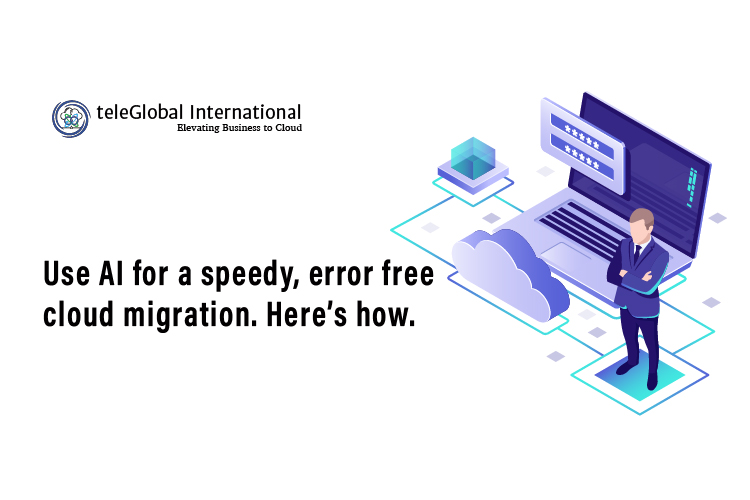
The cloud now plays a prominent role in every organization’s digital aspirations, and the Covid 19 pandemic has only served to accelerate the fulfillment of those aspirations. Moving to the cloud brings many benefits: greater scalability, agility, security, disaster recovery, etc. It also allows organizations to optimize their costs. But this can be a tricky affair for many. In the hurry to migrate to the cloud and take advantage of all of the cloud’s benefits, many organizations make basic mistakes in how they prepare and execute their cloud moves. As a result, they are saddled with unnecessary and mounting costs, delays, and inconsistent levels of maturity across the enterprise. Worse, after failing to achieve the returns they expected, a staggering 70% or more choose to return applications back to familiar on-premises environments. It’s a monumental waste of effort, time and money.
This article seeks to explain why this happens and how it can be avoided.
To begin with, IT heads of organisations believe they have to either move quickly—thus, saving time and money at the expense of precision and planning, which compromises their ability to take full advantage of all the benefits cloud offers. Or they undertake a detailed, planning and development process that sucks up a lot of resource time and effort. This is both very slow and very expensive.
However, there is an additional route that enterprises can take. And that is to leverage the abilities of automation and Artificial Intelligence. This is both quick, efficient and relatively economical, by virtue of saving resources, time, and effort. And avoiding expensive errors.
Using AI to Map the Unknown
The cloud can be a confusing, complex environment. Given its mind-boggling array of instance types, storage, ARs and pricing plans, an organization can be faced with as many as 25 million cloud configuration options.
Obviously, this adds to the complexity of the process and makes migration planning a complicated affair.
Organisations can avoid this by utilizing AI. AI can help reduce delays, minimize errors—or avoid them altogether— and reduce downtime, by anticipating future possible pain points and addressing them.
AI does this by mapping the organization to identify 1000’s data points, which then correlates to an ideal migration pattern. If one engaged experienced cloud experts to do this, it would take weeks and might still miss many potential efficiency traps. An AI algorithm does it accurately, within minutes. Furthermore, with each migration, the artificial intelligence tool adds to its body of data and uses this to supplement its knowledge and continuously refine its decisions. Another advantage is, that AI—being non-human—is not prone to human biases, and errors. This virtually guarantees objectivity and maintains consistency in its outcomes.
The planning phase is when AI/ML comes into its own. Applied intelligently, AI tools are invaluable in creating an accurate planning roadmap to give you as accurate and timely a migration as possible.
Watch out for the ‘artificial’ in AI
The very aspect that makes AI such a strong migration planning tool is also its weak spot: Its artificial nature. Since it is not human, AI tends to miss or downplay nuances that a human would recognize as important. The subtleties of an organization’s culture, for instance, or the way it addresses business objectives or ever-changing external market forces. AI/ML solutions may not recognize the importance of these and/or may not know how to incorporate them in their decisions.
But this is easily surmounted by ensuring oversight of the migration process by an experienced cloud engineer. While AI/ML tools do the grunt work, an expert and experienced team will bring invaluable real-life learnings and human ingenuity to the job.
Conclusion
In their eagerness to get to the cloud and being enjoying its benefits, IT stakeholders in many organizations are prone to “ set it and forget it” approaches. This inescapably leads to resource mismanagement and ver-provisioning, which negatively affects performance and eventually can leave associations increasing spending beyond initial budgets.
Security and compliance gaps can also go undetected and unaddressed, leaving systems vulnerable to cyber-attacks and compliance breaches.
As organisations evolve to meet the changing demands of the world, your cloud infrastructure needs to evolve correspondingly. AI/ML tools can be invaluable by monitoring your cloud environment in real-time and offering intelligent modernization and invention recommendations, enabling you to leverage the latest available technologies and gain a competitive business advantage.
Overall, despite what numerous associations originally assume, a lot of the challenges of moving and working in the cloud aren’t highly technical. Rather, the real test is deciding on the right route to take for your migration. Using all the tools at your disposal – to wit, AI and ML- in conjunction with a team of proven experts offers the fastest and most predictable route to success.







































